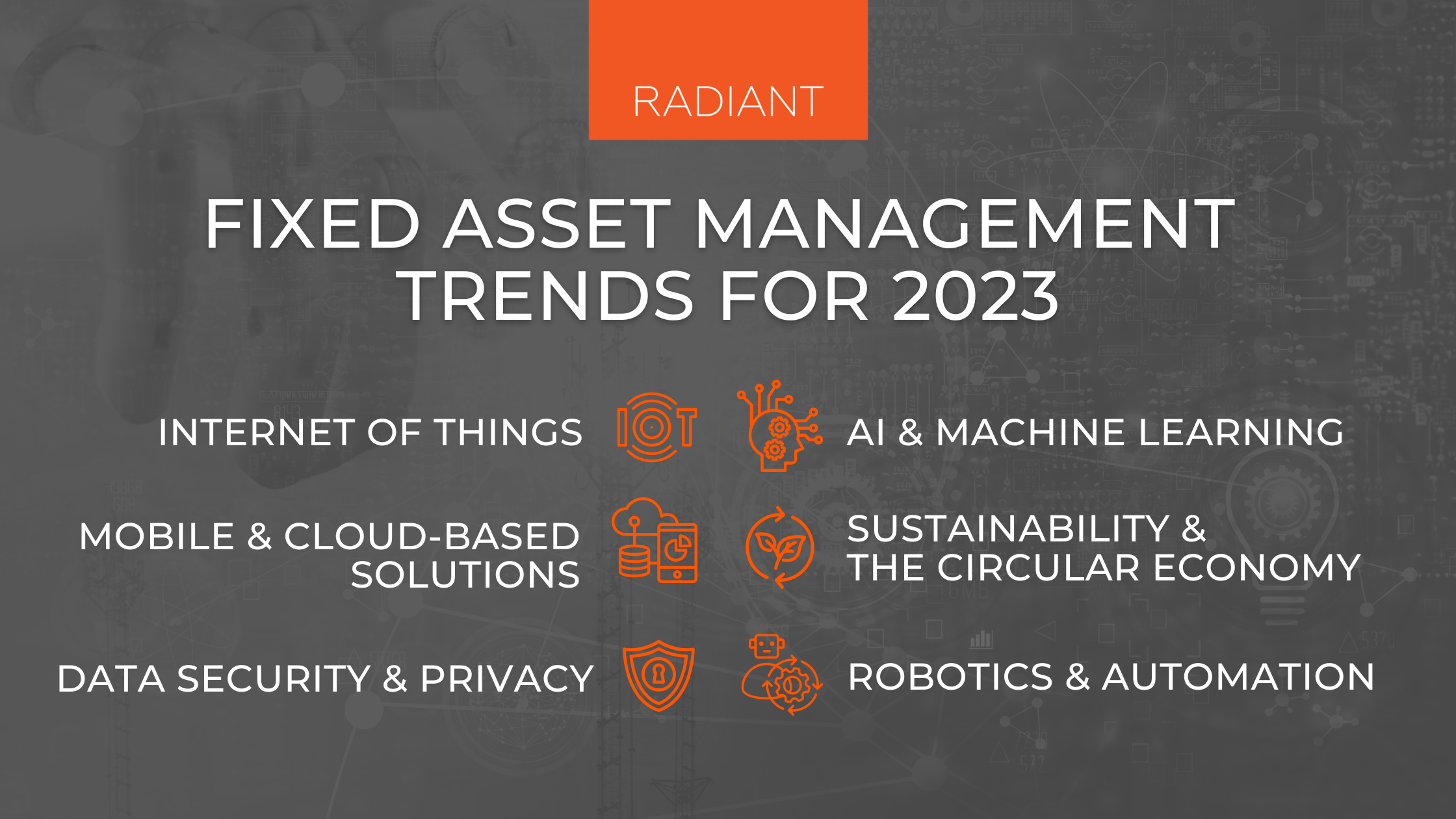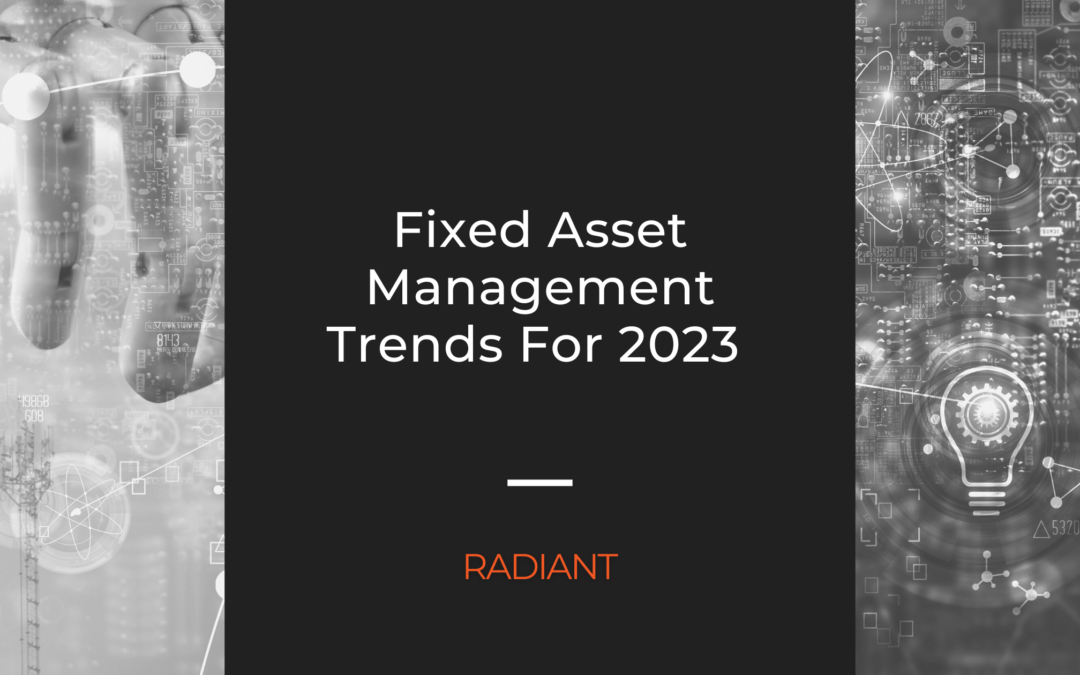Today’s digital age has opened the doors to various new opportunities, but with these advances come complex challenges — especially regarding the management of assets.
As business leaders are well aware, capturing accurate fixed asset data is essential for ensuring compliance and making sound decisions that drive your organization’s financial performance.
With every passing year, the race is on to stay ahead of changing trends and regulations to maximize value from asset investments.
In this blog post, we will delve into the top trending topics and fixed asset management trends you need to be aware of in 2023 so you can capitalize on what lies ahead.
Why Is It Important To Stay Up-To-Date On The Latest Fixed Asset Management Trends?
At the onset of the new year, it’s more important than ever for business leaders to remain up-to-date on emerging asset management trends for 2023.
As asset management trends continue to change and evolve, staying informed can help leaders stay ahead of the game when it comes to leveraging assets strategically. Not only does this ensure that resources are being used in optimal ways, but it also creates further opportunities for growth and success in the long run.
Drawing from a data-driven approach toward asset management trends offers business leaders insights that few others possess – giving them a clear edge over market rivals.
In short, staying updated on asset management trends of 2023 is essential for any serious business leader looking to excel this year.
Top Asset Management Trends For 2023
Fixed asset management trends are quickly evolving and will remain a major concern for asset managers in the near future. 2023 is likely to be an interesting year as IoT technology adoption continues to increase and organizations become more determined to achieve sustainable success.
Without further ado, here are our top 6 asset management trends to be aware of this year:

The Internet of Things (IoT) Will Continue To Play a Major Role In Fixed Asset Management
As asset management continues to undergo a digital transformation in 2023, the Internet of Things (IoT) will remain a major asset management driver.
The IoT connects physical assets and networks, allowing asset managers to monitor asset performance in real-time and store vital asset data.
Improved asset reporting, asset tracking, and asset maintenance are just some of the advantages asset managers can access through IoT technology. By leveraging predictive analytics models, asset managers can even anticipate future events that might impact their assets.
As more asset-intensive industries collect data on asset performance with IoT solutions, it’s clear that this cutting-edge technology will have a lasting impact on how asset management is conducted in the years to come.
AI And Machine Learning Will Also Be Used More Extensively In Fixed Asset Management
Beyond simply utilizing IoT technology, asset management strategies are increasingly leaning on the capabilities of AI and machine learning to automate processes further and ensure more accurate monitoring.
AI technologies learn from data to improve asset tracking, performance metrics, maintenance, and access control.
Machine learning tools offer the ability to identify patterns within asset lifecycles by mining historical and real-time asset-related information.
By leveraging these advanced technologies, asset managers will streamline operations, optimize asset usage, reduce risks, lower costs and ultimately improve asset utilization.
Expect To See a Rise In Mobile And Cloud-Based Fixed Asset Management Solutions
Fixed asset management is evolving rapidly, with an increasing number of businesses looking to utilize mobile and cloud-based solutions to help streamline asset tracking and asset lifecycle management.
Relying on outdated manual processes for asset management simply won’t do anymore – 2023 is set to be the year where teams make the jump from pen-and-paper asset tracking systems to sophisticated asset management software platforms that allow organizations to gain a real-time view of their asset data wherever they are in the world.
With this technology, businesses can minimize capital expenditure growth, reduce asset downtime, and better track asset depreciation over time.
Robotics And Automation Will Have An Increasing Impact On The Industry
This year, asset management trends will be moving towards using robotics and automation, where machines can help streamline asset processes.
This form of asset management offers a variety of advantages that span performance and compliance concerns, with robots being able to manage static asset data more quickly and accurately than manual efforts.
Automation has already begun to change asset management for the better by helping identify anomalies within asset inventories and even optimizing asset calendars for maintenance.
With this rate of positive growth, it’s likely that in 2023 asset management processes will employ robotic technology in other ways, such as making more informed decisions about future acquisitions or reorganizing assets that are no longer needed.
Renewed Focus On Asset Data Security And Privacy
2023 will be a pivotal moment for asset management as security vulnerabilities become even more relevant and the need for improved asset tracking becomes evident.
We know asset theft is on the rise worldwide due to an increasingly digital world; hackers are always trying to break into asset systems, hoping to take advantage of confidential customer data. As such, asset managers must remain vigilant regarding data security and privacy.
They must look into implementing protective measures such as encryption software that helps keep customer information safe from malicious entities.
Furthermore, due to the huge financial implications involved, asset tracking should now be viewed as an indispensable part of asset management within any organization globally to ensure operational efficiency, effective asset utilization, and risk assessment.
This is likely one of the biggest fixed asset trends we will see in 2023 as asset managers look to safeguard their customer information while leveraging opportunities within the sector itself.
Sustainability And Circular Economy Practices Will Become More Widespread
Last but far from least, fixed asset management is set to become increasingly important as the economy moves more toward sustainability and circular practices.
Asset managers are increasingly utilizing circular economy techniques to identify and manage asset lifecycles, as well as support sustainability initiatives throughout asset ownership.
With a focus on asset optimization and work process efficiency, asset managers of all kinds can use fixed asset management to reduce asset downtime, cut costs, increase asset utilization, optimize maintenance practices and improve compliance. This not only helps businesses reach their sustainability goals but also reduces the net carbon footprint of asset management procedures.
Moreover, fixed asset management can further be used to augment transparency and traceability throughout asset lifecycles for better accountability and governance –a key part of achieving greater sustainability goals.
All in all, embracing new fixed asset management trends this year can help businesses move closer to becoming significantly more sustainable while promoting long-term financial health within the organization.
How To Stay Ahead Of The Curve With Asset Management Trends For 2023
To stay ahead of asset management trends for 2023 and beyond, companies must strive to be proactive and anticipate potential changes.
By researching emerging asset management technologies now and making any necessary investments and operational changes, companies can ensure that they have a lower cost and time to market when trends inevitably shift.
Knowing the current asset management landscape helps businesses streamline asset tracking processes while saving precious time and money.
Proper asset management planning should emphasize data-driven accuracy and effective collaboration between financial managers and asset owners to ensure total asset visibility.
By starting to prepare now using data-driven asset management tools, you can be sure that your company is prepared for whatever comes in 2023.
Achieve Fixed Asset Management Success This Year With Radiant’s IoT Solution
As we enter 2023, it’s more important than ever to stay up-to-date on the latest fixed asset management trends.
The internet of things (IoT), artificial intelligence (AI) and machine learning, mobile and cloud solutions, robotics, and automation will continue to play major roles in the asset management industry.
Additionally, there will be a renewed focus on asset data security and privacy as well as sustainability and circular economy practices.
To ensure success this year, companies must explore IoT solutions like Radiant’s that can help them stay ahead of the curve. Request your demo below to see how our IoT solution can benefit your business in 2023 and beyond.
Last Updated on January 4, 2023 by Radiant

